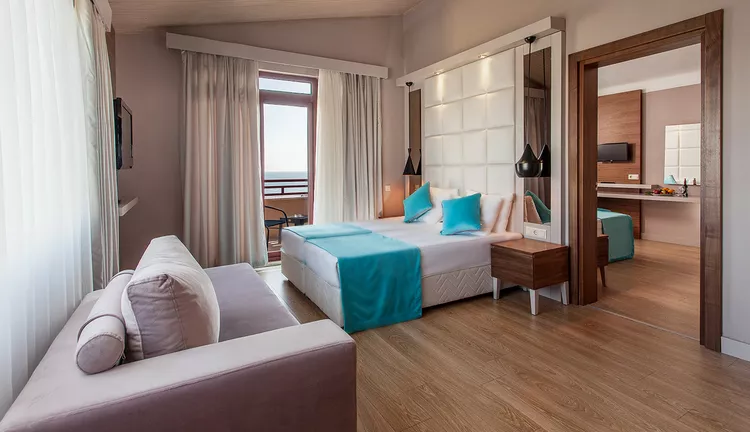1. Understanding Adjoining Rooms
2. How to Reserve an Adjoining Room
3. Differences between Adjacent and Adjoining Rooms
4. Suites versus Adjoining Rooms
5. Safety Precautions for Adjoining Rooms
Hotels often utilize industry-specific lingo for the various types of room offerings at each location. It behooves travelers to gain an understanding of the differences in terms so that when requesting or receiving an adjoining room, they know what to expect.
What Is an Adjoining Room?
An adjoining room refers to two guest rooms that are physically located next to each other and are connected by a locked door between them. These rooms may be booked together by request for one traveling party, or they can be booked separately by two different parties. This configuration is particularly useful for travelers with older children or larger groups who need more space.
How to Reserve an Adjoining Room
Most hotels do not clearly indicate if a room is adjoining on their booking sites. Therefore, ensuring a reservation that includes an adjoining room is best accomplished by directly contacting the hotel via phone and speaking with the front desk. Moreover, upon checking into the hotel, make sure to confirm that your reservation includes an adjoining door. This precaution can save you the inconvenience of returning downstairs with luggage to request a new room.
When searching for adjoining rooms, guests may have better luck with newer hotels and resorts. As more properties aim to attract families and groups, the design of hotels has evolved in recent years from mainly single-room layouts to include more adjoining rooms. Additionally, hotels that have recently undergone renovations may also feature an increased number of adjoining rooms available for booking.
Differences between Adjacent and Adjoining Rooms
While an adjoining room is always adjacent, booking an adjacent room does not guarantee that you will have an adjoining room. The key distinction is that while both rooms will be side-by-side, an adjoining room will include an inside door that directly connects the two rooms. Conversely, if you book an adjacent room, you would need to exit your own room and go into the hallway for access to the room next door.
Suites versus Adjoining Rooms
A suite room, executive suite, or mini-suite provides multiple bedrooms and generally offers a shared communal space accessed through a single doorway from the hall. In contrast, adjoining rooms may not always be occupied by the same guests, meaning the connecting door can remain locked and not utilized. On the other hand, a suite is exclusively designed for travelers who know each other.
Safety Precautions for Adjoining Rooms
If you are unaware of the guests in the adjoining room, always check to ensure that the door in between is locked. Depending on the hotel layout, there may be a single door between rooms that features a lock on each side, which must both be unlocked to allow entry between the rooms. Additionally, there may be two doors, where each room has a door that locks from the inside. If traveling with small children, some guests opt to bring their own door stop to prop open the adjoining door, as these doors are typically weighted to close automatically.





